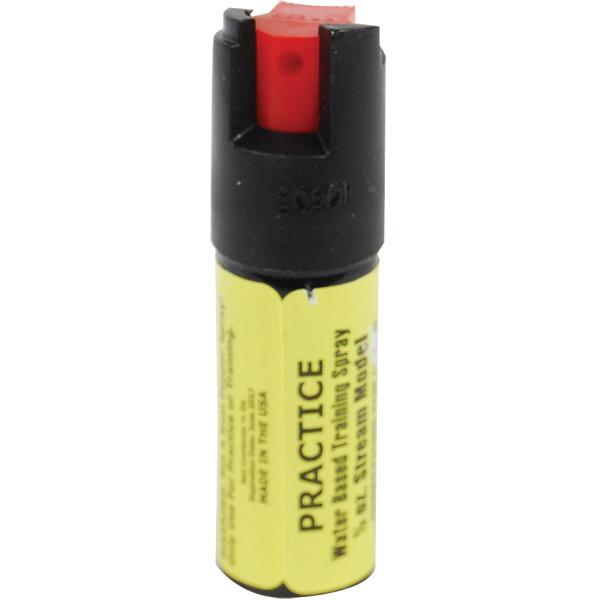Table of Contents
- Benefits of Inert Practice Spray in Safety Training Programs
- Integrating Practice Spray into Emergency Response Drills
- Best Practices for Effective Use of Training Sprays in Hazard Simulations
- Evaluating Training Outcomes and Enhancing Skill Retention with Practice Sprays
- Closing Remarks
Benefits of Inert Practice Spray in Safety Training Programs
Incorporating an inert practice spray into safety training programs offers trainers and participants the unique advantage of realistic, hands-on experience without the risks associated with active chemical agents. This method enhances muscle memory and situational awareness, allowing trainees to confidently execute safety protocols in a controlled environment. The tactile and visual feedback provided greatly increases engagement, resulting in higher retention rates and faster skill acquisition.
Moreover, using inert sprays supports sustainability and cost-effectiveness within training initiatives. They eliminate concerns over hazardous exposure and environmental impact, making repeated practice sessions feasible and safe. Key benefits include:
- Risk-free simulation of emergency responses
- Reduced need for costly safety equipment replacements
- Improved trainee confidence and readiness
- Compliance with workplace safety regulations
Integrating Practice Spray into Emergency Response Drills
Emergency response drills achieve new heights of realism and safety by incorporating inert practice sprays. These non-toxic aerosols simulate real-world scenarios without exposing trainees to harmful chemicals, allowing teams to refine their technique and coordination under pressure. The inclusion of practice spray enhances sensory engagement, enabling responders to recognize and react to airborne substances rapidly and accurately.
Key benefits realized through integration include:
- Improved hazard recognition: Trainees develop acute awareness of spray dispersion patterns.
- Enhanced protective equipment handling: Practicing in a controlled environment ensures proper donning and doffing procedures.
- Increased confidence and readiness: Confidence builds from repeated exposure to realistic, yet safe scenarios.
Best Practices for Effective Use of Training Sprays in Hazard Simulations
Maximizing the benefits of inert practice sprays in hazard simulations requires meticulous planning and adherence to safety protocols. Always ensure that the selected spray is non-toxic and specifically designed for training environments to eliminate any health risks. Proper storage and handling are crucial; sprays should be kept in well-ventilated areas and only dispensed in controlled settings. Before deploying, conduct a thorough risk assessment to align the simulation with real-world scenarios while safeguarding participants and equipment. This proactive approach minimizes unexpected hazards and fosters a more authentic training atmosphere.
Integrate these sprays within your drills by following a clear set of operational guidelines:
- Use sprays sparingly to avoid overwhelming participants or triggering unintended allergic reactions.
- Combine sprays with visual and auditory cues for a multisensory learning experience.
- Rotate the types of sprays used regularly to simulate various situational hazards effectively.
- Debrief after each session, gathering feedback to improve technique and safety measures.
Evaluating Training Outcomes and Enhancing Skill Retention with Practice Sprays
Effective evaluation of training outcomes demands tools that provide immediate, visible feedback without compromising safety. Inert practice sprays deliver precisely that advantage by simulating real-world deployment scenarios while eliminating the risks associated with active substances. Trainees can observe their spray patterns and practice corrective techniques in real time, facilitating a deeper understanding of proper application methods. This hands-on feedback loop enhances skill acquisition and allows instructors to identify areas needing further development, elevating overall training efficacy.
Beyond initial competency, maintaining long-term proficiency is a critical challenge for most safety programs. Incorporating inert practice sprays into routine drills helps reinforce muscle memory and decision-making speed under pressure. Key benefits include:
- Non-toxic, residue-free use that encourages frequent repetition
- Visual confirmation of accuracy and coverage
- Increased trainee confidence through risk-free experimentation
- Data-driven insights for tailored retraining sessions
Closing Remarks
In conclusion, the integration of inert practice spray into safety training marks a significant advancement in preparing individuals for real-world scenarios. By providing a controlled, risk-free environment, this innovative approach enhances skill acquisition and confidence without compromising safety. As organizations continue to prioritize effective and responsible training methods, the adoption of inert practice sprays is poised to become a standard component in safety protocols across various industries.Check Our Other Blogs
- StunGun – Your Trusted Source for Stun Guns, Laws, and Self-Defense Tips
- PepperSprayLaws – Your Trusted Resource for Pepper Spray Information
- StunGunLaws – Your Trusted Guide to Stun Gun Legality and Safety




